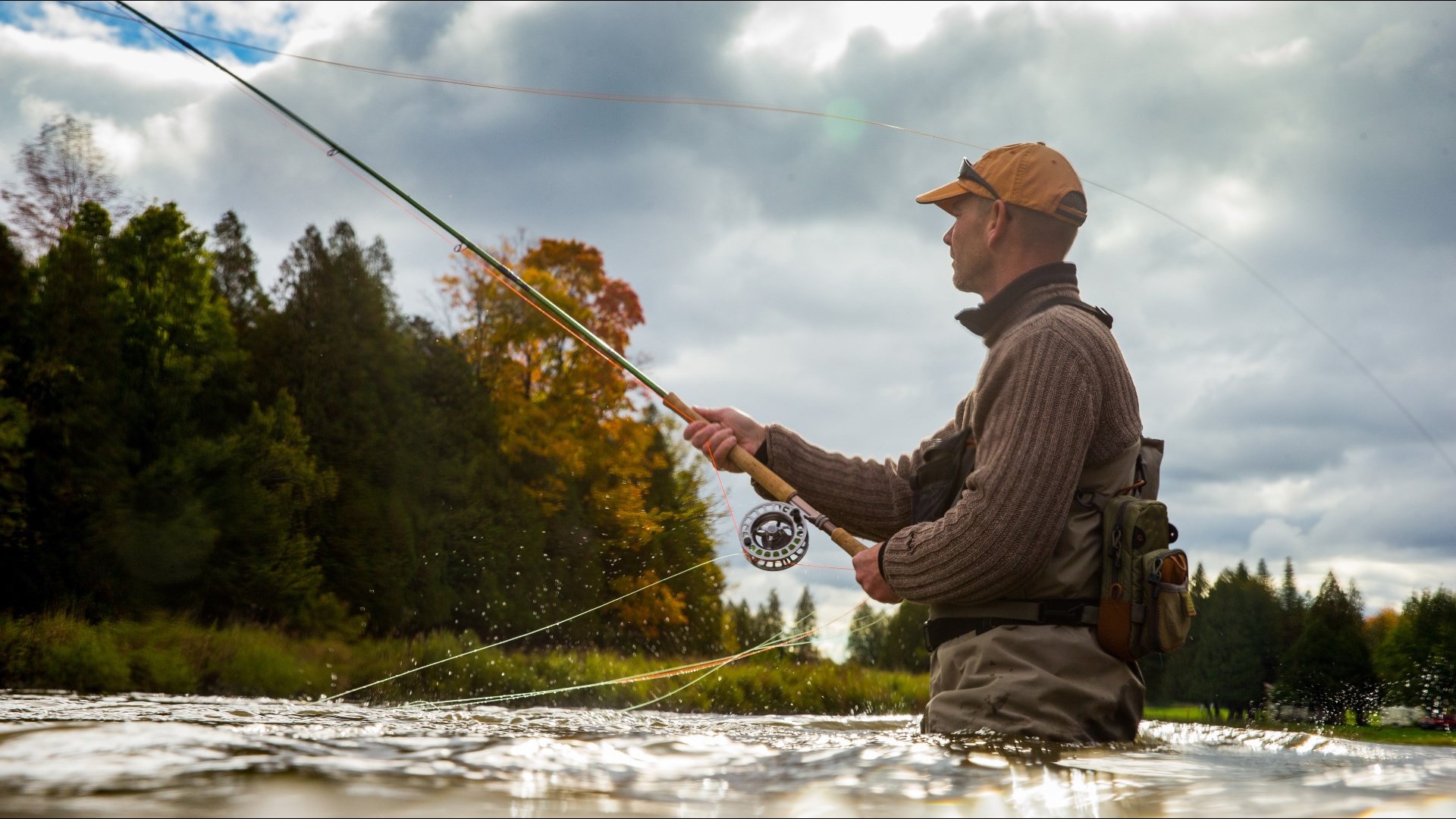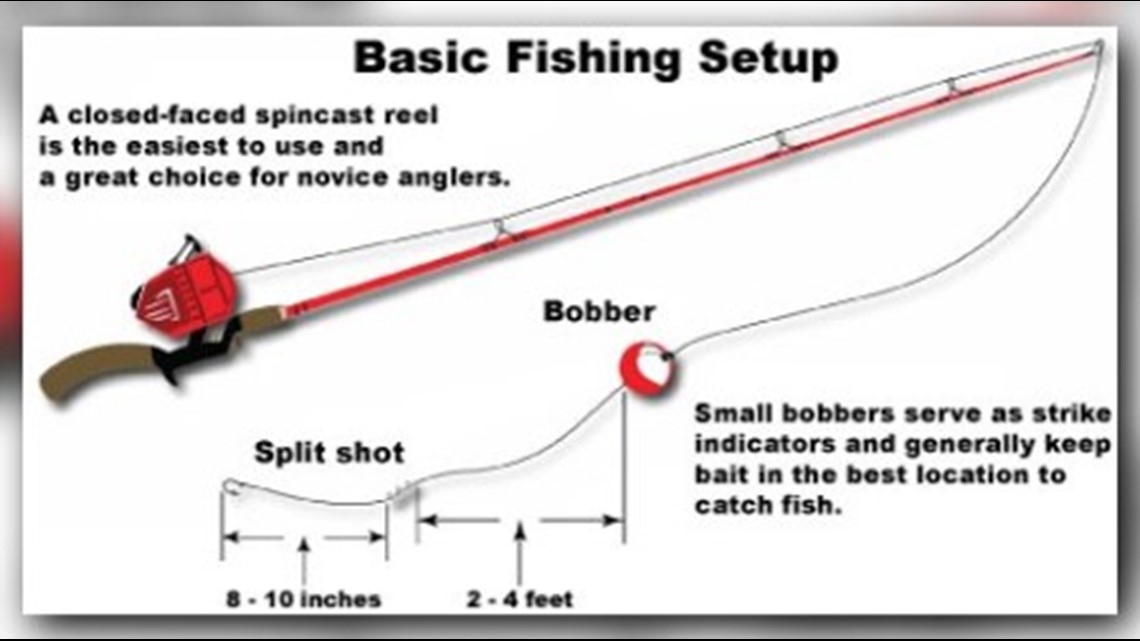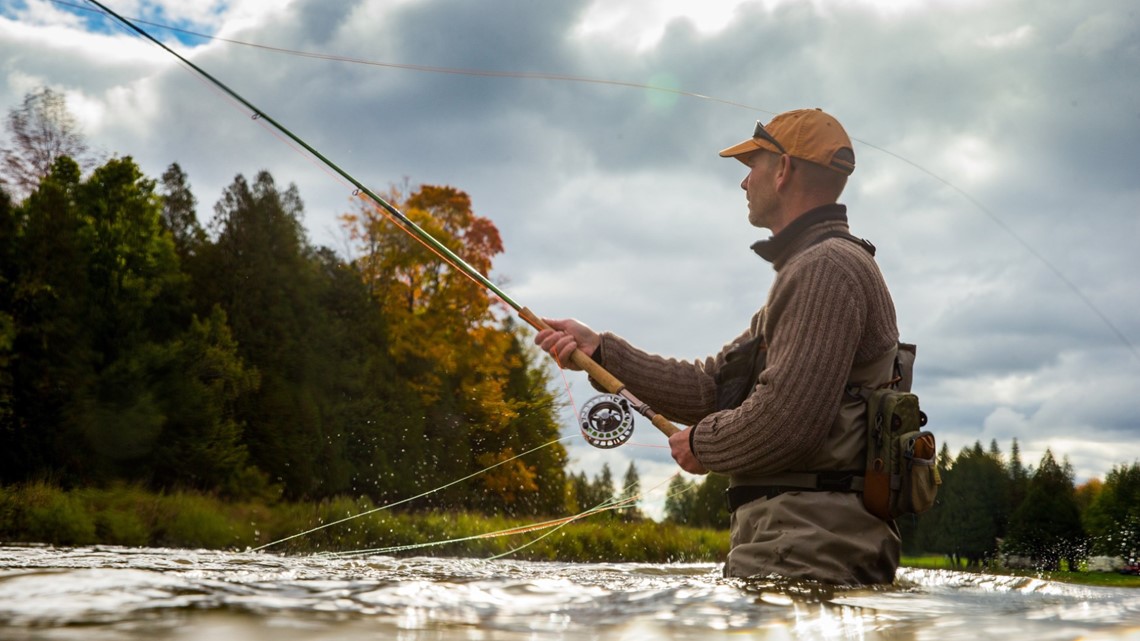Idaho Fishing Guide: Rules, gear and where to find the best spots
New to fishing in Idaho? This guide aims to provide you with the information you need to get started.
Thinkstock

With more than 26,000 miles of streams and rivers, 3,000 natural lakes and hundreds of thousands of acres of ponds and reservoirs, there is no shortage of opportunities in Idaho for prospective anglers.
The Gem State has seen increasing numbers of anglers for the past two decades. In 2020, the Idaho Department of Fish and Game reported a 10-year high in fishing license sales, a 15% increase from the year before.
"Idaho is very fortunate in that we are predominately a very rural state," said Martin Koenig, IDFG's sport fishing coordinator. "We have a lot of public resources, public land. We have good fishing and it's easily accessible."
But if you're just getting into fishing, it can be somewhat overwhelming as you try to figure out what kind of gear you'll need, whether you need a license, and where to find the best fishing spots.
This guide seeks to provide that information - along with links to helpful resources - you'll need to get started fishing in Idaho.
To fish in Idaho you need:
- To know the rules and regulations
- A fishing license
- Proper gear
- A place to go
Tip: Click on the chapters above to jump to different sections of the guide.
Rules and Seasons
Generally speaking, most Idaho waters have year-round fishing seasons, but some have special rules and limited seasons that you should know about as you plan your trip or outing.
The best way to make sure you've got the most updated information is to check out the Idaho Department of Fish and Game's (IDFG) Fishing Seasons & Rules booklet. It is available online for download (pdf). You can also pick one up at all Idaho Fish and Game offices and most sporting goods stores statewide.
The booklet is divided into sections by region, with each showing the regional season fishing dates, bag limits for specific species, and which waters have special rules in place.
Helpful links:
Get a Fishing License
All anglers in Idaho age 14 and over must purchase a fishing license. Idaho residents under age 14 do not need a fishing license. Non-residents under age 14 do not need a license if they are fishing with an adult who has a valid Idaho fishing license. A non-resident child’s catch counts toward the licensed adult’s limit.
Idaho Fish and Game offers a wide range of options when it comes to purchasing fishing licenses. As of 2021, an adult license costs $30.50 and a junior (age 14-17) license costs $16. Licenses are valid from January 1 to December 31, regardless of when it was purchased. Fishing licenses can also be bundled with hunting licenses.
Other options include single-day, three-year and lifetime licenses. Steep discounts on licenses are offered for disabled veterans, military members on furlough, and disabled persons.
Both residents and non-residents are required to buy special permits for salmon and steelhead fishing, or if fishing with two poles.
Licenses can be purchased online, at a vendor (click or tap here for a map of businesses that sell licenses), by phone at 1-800-554-8685, or in person at any Fish & Game regional office.
Get Geared Up
For many novice anglers, the most intimidating aspect of learning to fish is getting your hands on the right gear. It can be an expensive endeavor, especially if you wander into a sporting goods store not knowing what you need and walk out with hundreds of dollars (or more!) worth of gear you may not need.
The most important gear in your kit is, of course, your fishing rod and reel. IDFG recommends starting with a simple 5- to 6-foot rod and reel combination with 4- to 8-pound monofilament fishing line. A closed-faced reel with a thumb button to release and stop the line is easy to use. And a simple hook, weight and bobber setup is ideal for beginners (see image below).


Fly fishing is another popular option for Idaho anglers. It requires a different type of pole and line and generally takes more practice than standard spin or baitcast fishing to become proficient at it. This article from Drifthook has a good explanation of the differences in equipment and techniques between fly fishing and spin fishing.


In addition to a rod and reel, there are several other basic supplies you'll need to get started:
- Pliers for retrieving hooks out of your fish
- Stringer or bucket of water to keep your fish cold and fresh (catch and keep only)
- A knife to clean your fish (catch and keep only)
- A ruler to measure your fish
- Fingernail clippers or scissors for clipping line.
- Cooler with ice to keep fish cold when transporting (catch and keep only)
Learn to Fish
If you've never been fishing before, you can always go out to your local fishing hole, cast a line and try your luck. But it's always better to learn from someone who knows what they are doing.
If you have a friend or family member who enjoys fishing, ask if you can tag along on their next outing. if not, a simple Google search reveals a plethora of professional local fishing classes and online video tutorials for everyone from beginners to experts. For example, sporting goods company Orvis offers an entire series of online video lessons on fly fishing that includes everything from how to get started to how to tie flies.
Whether you're just learning the basics or wanting to try fly fishing for the first time, there are plenty of options.
Idaho Fish and Game also offers several free, family-friendly events to help novice anglers get familiar with fishing. During the summer months, IDFG sets up portable trailers at local ponds throughout the state. Called "Take Me Fishing" trailers, they are stocked with equipment and staffed with knowledgeable people ready to help kids and parents start fishing.
On one day per year, the state allows for fishing without a license. Free Fishing Day takes place on the second Saturday in June each year. Fish and Game personnel and volunteers set up several free events at local fishing waters throughout the state to help first-timers learn about the sport.
Find a Great Fishing Spot
Given Idaho's abundant rivers and lakes, it's no surprise that the state is considered a bona fide fishing utopia.
Good fishing is available across Idaho, but some spots are better for beginners and kids. The Angler Guide to the Gem State contains information and locations for smaller lakes and ponds throughout the state.
The Angler Guide is organized by regions of the state, which allows you to focus on specific areas closest to you.
Family Fishing Waters
IDFG has identified dozens of choice spots throughout Idaho that are designated Family Fishing Waters. These are places with easy access, facilities and a good chance of catching fish. Oftentimes these spots are stocked with fish.
Recommended Fishing Waters
Fish and Game managers have also identified a list of Recommended Fishing Waters - rivers, lakes and streams that are good for catching fish and have reasonable access.
"These are the locations our biologists would recommend to their relatives (that they like) who are visiting from out of town," the IDFG website reads.
Already have an idea where you'll be going fishing and want to know what kinds of fish you'll find there? Check out the Idaho Fishing Planner, a more advanced tool that will provide you with detailed information about specific lakes, reservoirs, rivers and streams, including stocking reports, species, facilities, maps and rules.
Fish Identification
Idaho boasts 42 species of game fish, some of which are native to the state and some that have been introduced.
Not sure how to tell the difference between a cutthroat trout and a steelhead? You're not alone. Being able to identify and differentiate between the various species requires a lot of practice. For example, there are more than a half-dozen species of trout - and not all are harvestable, such as bull trout, for example.
The Idaho Fishing Seasons & Rules booklet includes illustrations and descriptions to help you know what species of fish you just caught. Fish that are not harvestable and must be released are clearly marked in the booklet. The illustrations are also available online on IDFG's website.


Helpful links:
Set or Break a Record
As a measure of how popular fishing has become in the Gem State, more than two-dozen catch and release records were set in 2020, more than any year since the state began keeping track in 2016. An additional six certified weight records were also set.
If you're looking for an added challenge on your angling adventure, consider trying to break an existing record or establish a record that has not yet been set.
Idaho splits its fishing records into two categories: Catch and release and certified weight. Catch and release is based on the length of the fish, which must then be released alive. Certified weight is, as the same implies, based on the total weight of the fish using a certified scale. The fish may be harvested, depending on the rules for the species of fish and the location it was caught.
In both categories, applicants must submit a completed form that includes the signature of one eyewitness to the measurement.
Catch and release certifications also require at least one photo of the fish with the angler and two or three photos of the measuring process.
Certified weight records require a receipt from a certified scale documenting the weight, verification of species by Idaho Fish and Game, and at least one photo of the fish.
Additionally, to be eligible for a state record, the fish must be caught in Idaho by the holder of a valid Idaho fishing license and must be caught using legal methods in publicly-accessible waters. All applications must be submitted within 30 days of the catch date.
Check out the full list of guidelines for catch and release and certified weight records.
Angler Incentive Program
Certain species of fish pose risks to native species and fisheries by cross-breeding or outcompeting them for limited resources. These species include lake trout and walleye in Lake Pend Oreille and its tributaries, rainbow trout in the South Fork of the Snake River, and northern pikeminnow in the Snake River.
Idaho Fish and Game offers cash incentives for anglers who catch and remove these species from certain locations. Find out more about the Angler Incentive Program here.
